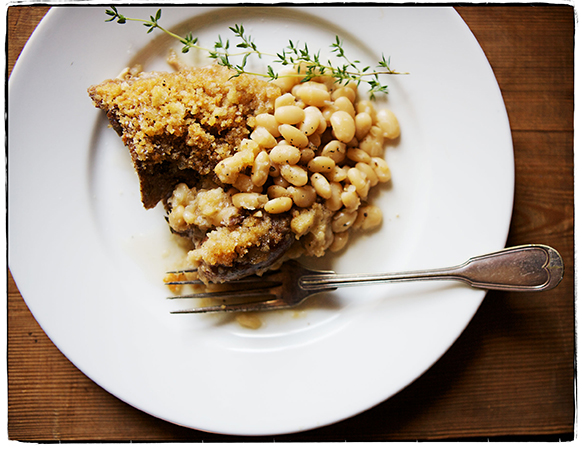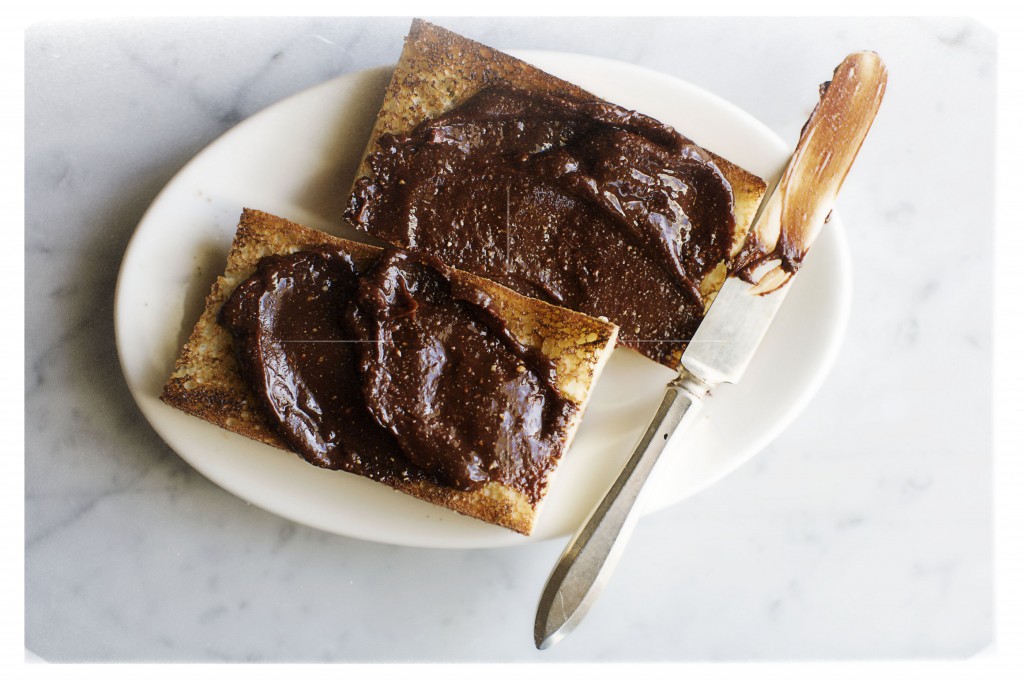A POT BEANS

We often keep a pot of brothy beans in the refrigerator (they’ll keep nicely for up to 5 days). It gives us an instant leg up on putting a meal together. We usually use cannellini but often cook what we have on hand or what sounds good to us. Canned beans are okay in a pinch, of course, but don’t really have the fresh sweet flavor and just-tender, somewhat toothsome texture of beans that you have cooked yourself. You get the point. Cook a pot of beans on Sunday, and we’ll show you how to eat well all week—cassoulet our way, braised escarole and beans, tuna and sausages with white beans, beans with spicy black olive vinaigrette, beans on toast with olive oil and fried sage.
NOTES ON DRIED BEANS
We cook beans all the time, but we do it instinctively. To verify that our methods were up to scratch, we dove in and did a little bean research. Turns out our instincts were right. Here’s what we found out.
BUYING: Choose beans that have been recently harvested and dried; this may be the most important factor in cooking a good pot of dried beans. As beans age, their outer shell becomes tough and impermeable. Sometimes really old beans will never get tender, even after hours and hours of cooking. Shop at a store that moves a lot of beans off their shelves, ensuring that you’re buying from a current crop. Though it may be hard to spot, look for an expiration date on the package.
SOAKING: To soak or not to soak, that is the question. Soaking hydrates and softens the dried beans, giving them a jump start. But you have to think ahead and remember to soak them in the first place. If you choose to soak your beans, they only need about 4 hours (the oft-used phrase “soak the beans overnight” is more about convenience). Or you can use the “quick” soak method: put the beans in a pot, cover them with cold water, bring the water to a boil, and remove the pot from heat. Cover the pot and let the beans soak for 1 hour. Drain, then cover the beans with fresh cold water and gently simmer them until tender. This method will shorten the cooking time a bit and leach out some of the indigestible carbohydrates that cause flatulence (unfortunately, some of the beneficial vitamins and minerals will also get poured down the drain). If you forgo soaking, just put the unsoaked beans right in a pot, cover with cold water, and onto the stove they go. But be sure that you cook them at the gentlest simmer so their skins don’t break.
SALTING: Kitchen lore has it that adding salt to beans while they cook will inhibit them from ever becoming tender, but it’s just not true. In fact, salt accelerates the cooking time by tenderizing the bean skins.
COOKING: For plump, creamy beans that hold their shape, cook them slowly over low heat in plenty of water.
![]()
BASIC COOKED DRIED BEANS
makes 9 cups
It is your preference whether to soak or not to soak. MH likes to hydrate the beans before cooking; CH believes that with the gentlest cooking you can jump right in without a soak. Look for the “Best Used By” date when buying a package of dried beans. The fresher the beans, the more quickly they’ll cook. One pound dried beans will yield about 6 cups of cooked beans. Cooked beans freeze beautifully.
[wpcol_1half id=”” class=”” style=””]
3 cups dried beans, unsoaked or soaked
for 4 hours or overnight
1 onion, halved
1–2 cloves garlic
1 branch fresh thyme, optional
[/wpcol_1half] [wpcol_1half_end id=”” class=”” style=””]
2 bay leaves
Salt
Really good extra-virgin olive oil
[/wpcol_1half_end]
Drain the beans and put them into a medium, heavy-bottomed pot. Cover them with cold water by 4 inches or so. Add the onion, garlic, thyme, if using, and bay leaves. Bring the beans just to a simmer over medium heat, stirring occasionally. Reduce the heat to low and very gently simmer them until they are swollen and tender, 30–90 minutes (or more), depending on the freshness of the dried beans. The beans should remain submerged while they cook, so add more water to the pot, if you need to. Remove the pot from the heat. Stir in a generous pinch of salt. Add a good glug of olive oil. Let the beans cool to just warm or to room temperature in the cooking liquid. (The beans will keep in the refrigerator for up to 5 days.

















